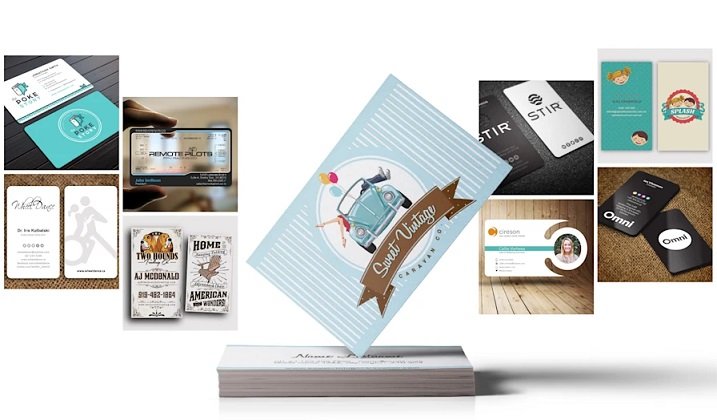In the fast-paced world of business, first impressions are everything. One of the most crucial tools in making that impression is a well-designed business card. Business cards printing is more than just transferring ink onto a piece of paper; it’s about creating a brand image, solidifying your identity, and conveying professionalism. Whether you’re a seasoned professional or a startup, having a standout business card can help you build connections, communicate your brand, and ensure that your details are never forgotten.
In this guide, we will explore the key aspects of business card printing and how to create a design that not only looks good but serves its purpose effectively.
Why Business Cards Still Matter in a Digital Age
Even in today’s digital age, where email and social media connections are commonplace, the importance of physical business cards cannot be underestimated. Business cards provide a tangible connection between you and your potential clients, partners, or employers. They also offer an opportunity to leave a lasting impression, especially when designed with precision and printed with quality.
Key Benefits of Using Business Cards:
- Professionalism: A high-quality business card immediately communicates that you take your business seriously.
- Networking Tool: At events, meetings, and conferences, exchanging business cards is a quick and effective way to share contact details.
- Brand Identity: Your card is a reflection of your brand. With the right design, colors, and typography, your business card can effectively communicate your company’s ethos and culture.
- Convenience: A business card can be easily shared or passed along, unlike a digital connection that requires internet access or a device.
How to Design a Business Card that Stands Out
To ensure your business card doesn’t get lost in the sea of others, follow these best practices for design:
1. Simplicity is Key
The most successful business cards are those that balance simplicity with creativity. Avoid overwhelming the card with too much text or design elements. Focus on the essentials—your name, title, company logo, and contact details.
2. Choose the Right Font and Colors
Fonts should be easy to read, even at a small size. Stick to professional, clean fonts such as Helvetica, Arial, or Garamond. In terms of colors, align them with your company’s branding. Keep in mind that colors can evoke emotions; for example, blue often signifies trust, while red can represent passion and energy.
3. Use High-Quality Paper
The tactile experience of your business card can leave a lasting impression. Opt for high-quality cardstock with a weight of at least 300gsm. Consider finishes such as matte, gloss, or silk, which can enhance the card’s durability and look.
4. Incorporate a Call-to-Action
While a business card is primarily used for sharing contact information, including a call-to-action can be a smart way to engage the recipient. For instance, you could add a QR code that directs them to your website or a special offer page.
Types of Business Card Printing Techniques
When it comes to printing, there are several techniques you can choose from depending on your budget and design needs:
1. Digital Printing
This is the most common form of printing, ideal for small batches. It’s cost-effective and offers a quick turnaround time. Digital printing is suitable for simple designs and can produce crisp, clean results.
2. Offset Printing
For larger orders, offset printing is the preferred method. It provides high-quality, detailed results and allows for greater consistency in colors. The downside is that it is usually more expensive and requires more time than digital printing.
3. Letterpress
If you’re looking for something unique and tactile, letterpress printing could be a good option. It involves pressing the design into thick paper, creating a textured, embossed look. This technique is more expensive but can make a memorable impact.
4. Embossing and Foiling
For those wanting a luxurious touch, consider embossing or foiling. Embossing adds a raised texture to parts of your card, such as the logo or name, while foiling uses metallic elements to highlight specific areas.
What Information to Include on Your Business Card
When deciding what to put on your card, less is often more. Include the essentials:
- Your Name: This is the most important element. Ensure it stands out.
- Job Title: Your title clarifies your role within the company.
- Company Name: This should be easily identifiable, usually placed next to your logo.
- Contact Information: Include your phone number, email address, and website.
- Social Media Handles: If relevant, add your LinkedIn or other professional social media profiles.
- QR Code: A growing trend is adding a QR code that links to your website or online portfolio.
Choosing the Best Printing Services
Not all business card printing services are created equal. To get the best results, look for a printing company that offers:
- Customizable Templates: If you’re not a designer, choose a service that provides editable templates. These will guide you through the design process while still allowing for a degree of customization.
- Additional Printing Services: Some businesses may also need loyalty card printers, which can be useful for customer reward programs or membership benefits. Choosing a printing company that offers both business card and loyalty card printing ensures consistency in quality and branding.
- Fast Turnaround: Time is of the essence. Choose a service that can print and deliver your business cards quickly.
- Sustainability: In today’s eco-conscious world, many businesses are opting for recycled or sustainable paper options. If your brand emphasizes sustainability, ask your printer about their eco-friendly paper options.
How to Make Your Business Card Memorable
1. Unique Shapes
Most business cards are rectangular and of a standard size. One way to stand out is by using a unique shape, such as a square or circle. While this may cost slightly more, it can help your card stand out in a stack.
2. Incorporate Images
Instead of sticking solely to text, consider incorporating relevant images or icons. For example, if you’re a photographer, use a portion of the card to display one of your best works.
3. Interactive Elements
Some modern business cards incorporate interactive elements, such as pop-up designs or augmented reality (AR). While these options may be more expensive, they can significantly increase engagement with your card.
4. Consistent Branding
Your business card should be an extension of your brand. Use the same colors, logos, and fonts as you do in other marketing materials to maintain consistency.
Conclusion
A well-designed, high-quality business card can significantly boost your professional image and help you make lasting connections. When thinking about business card printing, it’s important to consider the design, paper quality, and printing techniques to create a card that truly represents you and your brand. By following the guidelines above, you’ll be well on your way to creating business cards that not only look great but also stand out from the crowd.





